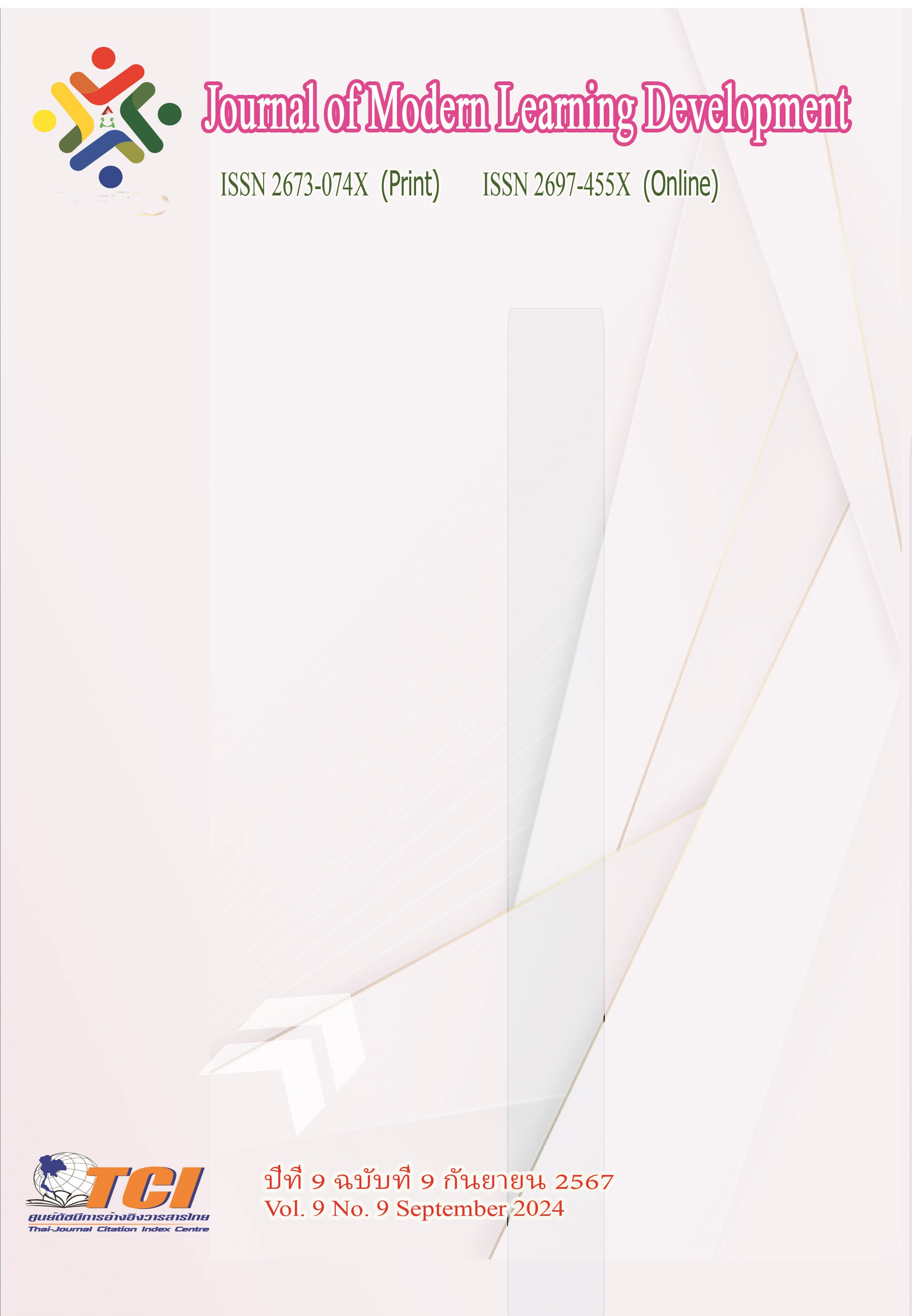Participation; handwoven cloth production process; community enterprise; self-reliance
Main Article Content
Abstract
This research has the following objectives: 1. To study the level of knowledge and understanding that affects participation in the hand-woven fabric production process on the development of self-reliant community enterprises. 2. To study the level of participation in the production process. Hand-woven cloth for the development of self-reliant community enterprises. 3. To study the problems and solutions of participation in the hand-woven cloth production process for the development of self-reliant community enterprises. Quantitative research (Quantitative Data) Members of the community weaving enterprise membership group registered with the Community Development Office. and Khon Sawan District Agriculture in Chaiyaphum province From a total of 663 members, the sample size was determined using Krejcie & Morgan's table. The sample size was 248 people. The tool used for data collection was a questionnaire. The statistics used for data analysis included frequency distribution and percentage (Percent). Mean ( ) Standard Deviation (S.D.) The research results are as follows.
Knowledge and understanding of the hand-woven fabric production process towards the development of self-reliant community enterprises. It was found that the sample group had knowledge and understanding of the hand-woven fabric production process for the development of self-reliant community enterprises. Most of the samples were able to answer the questions correctly. The sample group answered 97.98% correctly and the level of participation of people in the hand-woven fabric production process towards the development of self-reliant community enterprises was found to have opinions about the hand-woven fabric production process towards the development of self-reliant community enterprises. Overall, it was at a moderate level ( = 3.08). The opinions regarding the problems and solutions of participation in the handwoven fabric production process towards the development of self-reliant community enterprises were that local agencies should strengthen community enterprise groups by Allocating an adequate budget Provide opportunities for members to participate in determining the direction of the group's plans. There is a greater exchange of knowledge among members both within and outside the group.
Article Details
References
กรมส่งเสริมวัฒนธรรม. (2564). ที่มาลายผ้าทออีสานอันงดงาม. กินแซ่บ: ธนาคารกรุงเทพ.
ชนาภรณ์ อยู่ผาสุก.(2563). การพึ่งตนเองของชุมชนบ้านดอนพรม ตําบลดอนคา อําเภอบางแพ จังหวัดราชบุรี. สาขาวิชาคอมพิวเตอร์ธุรกิจ คณะวิทยาการจัดการ: มหาวิทยาลัยราชภัฏนครปฐม.
ชูศรี วงศ์รัตนะ. (2560). เทคนิคการใช้สถิติเพื่อการวิจัย. กรุงเทพมหานคร: อมรการพิมพ์.
ทัศนีย์ชัย ศิริวรรณ. (2564). การพัฒนาดัชนีชี้วัดความสำเร็จอย่างยั่งยืนของ กลุ่มวิสาหกิจชีววิถีตำบลน้ำเกี๋ยน อำเภอภูเพียง จังหวัดน่าน. วิทยาศาสตรมหบัณฑิต สาขาวิชาพัฒนาทรัพยากรและส่งเสริมการเกษตร. บัณฑิตวิทยาลัย: มหาวิทยาลัยแม่โจ้.
นิตยา สีคง. (2563). การจัดการความรู้กลุ่มทอผ้ายก. ศูนย์ศิลปาชีพบ้านเนินธัมมังจังหวัดนครศรีธรรมราช.บัณฑิตวิทยาลัย: มหาวิทยาลัยศรีนครินทรวิโรฒ.
นิรัช สุดสังข์. (2559). ระเบียบวิธีวิจัยทางการออกแบบ. กรุงเทพมหานคร: โอเอสพริ้นติ้งเฮาส์.
บานชื่น นักการเรียนและเพ็ญศรี บางบอน. (2559). การพัฒนาที่ยั่งยืน Sustainable Development. สิรินธรปริทรรศน์. 17 (2). 64-69.
ประทีป วีระพัฒนนิรันดร์. (2541). เศรษฐกิจชุมชน: ความหมาย ฐานคิด แนวทางปฏิบัติ. กรุงเทพมหานคร: กรมการประมง.
ศุภาวดี กรมทอง. (2557). การมีส่วนร่วมของประชาชนในการพัฒนาท้องถิ่น กรณีศึกษาองค์การบริหารส่วนตําบลห้วยแก้ว อําเภอบึงนาราง จังหวัดพิจิตร. รัฐประศาสนศาสตรมหาบัณฑิต สถาบันบัณฑิตพัฒนาบริหารศาสตร์.
Bloom,Benjamin S.,et al. (1971). Hand book on Formative and Summative Evaluation of Student Learning. New York: Mc Graw-Hill Book Company. 208 : 219.
John M.Cohen and Norman T. Uphoff. (1980). “Participation’s Place in Rural Development : seekclarity through specifics”, World Development. Vol. 8 : 219.
Krejcie, R.V., & D.W. Morgan. (1970). “Determining Sample Size for Research Activities”.Educational and Psychological Measurement. 30 (3), 607 – 610.


